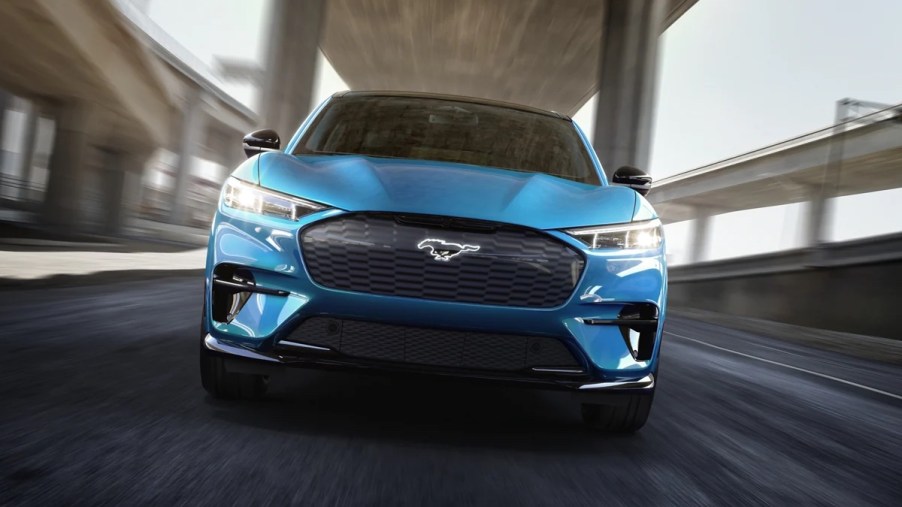
How Much Driving Range Do Electric Vehicles (EVs) Waste While Idling?
A not-too-uncommon reality of driving an internal combustion engine (ICE) vehicle is the phenomenon known as idling. A car is idling when the engine is on but the vehicle is not moving. A problem with idling is that it wastes fuel. You get zero miles per gallon when sitting still. Some car manufacturers have addressed this problem by creating Auto On/Off features that turn off their engines when the vehicle comes to a stop.
We are in a time when electric vehicles (EVs) are growing in popularity. The convenience and cost savings of these vehicles make them an attractive option for many drivers. One of the primary concerns among potential EV owners, however, is the range of the vehicle. So exactly how much driving range is lost when an electric vehicle idles?

For gas cars idling wastes more gas than restarting your vehicle
Sometimes you will find yourself in a situation that requires you to idle your car, like stop-and-go traffic. Most of the time, however, you can prevent most cases of idling and your fuel budget will thank you for not wasting so much gas.
According to the South Carolina Department of Health and Environmental Control, it is a common myth that restarting an engine wastes more fuel than idling. In reality, idling for just 30 seconds actually wastes more fuel.
Idling is harder on the engine because it leaves residues that can damage the engine components which can lead to higher maintenance costs. Also, idling uses up to half a gallon of fuel per hour, depending on the size and type of engine. If you are in the habit of idling, it could cost you several dollars per week.
Electric vehicles use little power while idling
According to Climate Biz, electric vehicles technically do not idle. This is because the motor does not need to stay on when at a stop. The motor provides instant electricity and does not need to stay running. So, the motor turns off but the vehicle is technically not off.
Most modern EVs use the battery to power the AC, radio, and computer. The motor may turn off when the car is stopped but the battery is still in use to run the extra features.
This means that the battery wastes practically no power when idling. According to OSVehicle, electric vehicles can idle for 24 hours due to not using energy while not in motion. Some of the most current EVs can idle for up to three days when the battery is fully charged and extra features are not in use.
If you find yourself stuck without a charging station in sight, you can increase your chances of getting home or to a charging station in time by turning off your heating or cooling system, audio system, extra lights, and screens.
Cold weather can deplete an EV battery, but not much
While we now know that electric vehicles waste very little power while idling, there still remain a few questions. What about during more extreme weather, specifically cold weather? What if you are stranded on the highway during a winter storm like what happened on I-95 in January 2022 (according to NBC News)? Will your EV keep you warm without running out of power?
The event on I-95 caused enough angst for some EV owners that some conducted their own experiments. Inside Hook reports on one particular test case.
The test vehicle was a Mustang Mach-E 2021 Premium AWD model. It had an extended-range battery with an EPA estimate range of 270 miles on a full charge. The idea was to simulate being stuck in a major traffic jam in the winter for at least 12 hours.
The test started at 5:45 am with a battery charge of 100% and 13 degrees Fahrenheit outside. The driver simulated leaving home, grabbing a coffee, and getting on the highway where he would idle for the next 12 hours. He did not bring any extra blankets or clothes to stay warm.
The driver used the heated seats and steering wheel to stay warm but also used the heating system to keep imaginary passengers warm too. He drove around the block a few times to simulate stop-and-go traffic as well as turning off the EV to conserve energy.
The results of the test were that 25% of the range was lost over 12 hours while keeping the EV toasty. One can speculate that the EV would lose about 50% of its range in 24 hours.
This test does not answer all the questions about EVs in the winter but it does show that a modern EV can withstand extreme cold while losing minimal range.
RELATED: How Long Does It Take to Charge an Electric Car at Costco?


